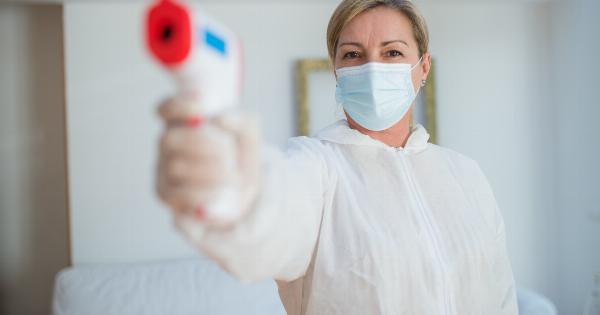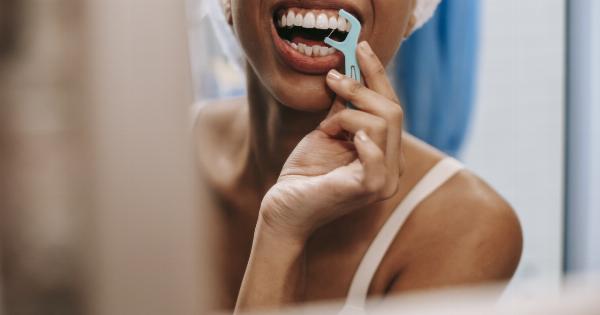Regular breast self-examinations are crucial in detecting early signs of breast cancer.
By understanding how to perform a self-examination and what to look for, individuals can take charge of their breast health and seek medical attention if any abnormalities are found. This article aims to decode the findings of a breast self-examination to help individuals better understand what different signs and symptoms may indicate.
Step-by-Step Guide to Breast Self-Examination
Performing a breast self-examination involves a systematic approach that can help individuals identify any changes or abnormalities in their breast tissue. Here’s a step-by-step guide:.
Step 1: Visual Inspection
Begin by standing in front of a mirror with your arms at your sides. Observe the size, shape, and contour of your breasts. Pay attention to any visible changes, such as dimpling, puckering, or changes in skin texture.
Also, look for any nipple changes or fluid discharge.
Step 2: Raise Your Arms
Raise your arms above your head and repeat the visual inspection. This position helps in exposing any underlying changes that may not be visible in the previous step. Take note of any changes in breast symmetry or the appearance of the nipple.
Step 3: Examination While Lying Down
Lie down flat on your back with a pillow under the shoulder of the breast you are examining. Place your right arm behind your head for the examination of the right breast.
Use the pads of your three middle fingers on your left hand to examine the right breast. Move your fingers in small circular motions, covering the entire breast area. Start from the outermost area and move towards the nipple. Repeat this process for the left breast.
Step 4: Examination While Standing or Sitting
Next, stand or sit upright and raise one arm behind your head. Using the pads of your three middle fingers on your opposite hand, perform the same circular motions as in Step 3. Begin from the outer area and systematically move towards the nipple.
Repeat the process for the other breast.
Decoding Breast Self-Examination Findings
Now that you’re familiar with the steps involved in a breast self-examination, let’s explore the various findings you may encounter and what they could indicate:.
1. Lumps or Masses
Finding a lump or mass in the breast can be alarming, but not all lumps are cancerous. During a self-examination, if you detect a new lump or mass, it could indicate a non-cancerous condition like a benign cyst or fibroadenoma.
However, it’s essential to have any new lump evaluated by a healthcare professional to rule out the possibility of breast cancer.
2. Nipple Discharge
Noticing nipple discharge during a self-examination can also raise concerns.
While it may be normal to experience clear or slightly milky discharge, any discharge that is bloody or occurs spontaneously without stimulation should be evaluated by a healthcare provider.
3. Changes in Breast Size or Shape
Significant changes in breast size or shape may be a cause for concern. If you notice sudden changes or an asymmetrical appearance between your breasts, it’s important to consult a healthcare professional for further examination.
4. Skin Changes
During a self-examination, if you observe any skin changes like redness, swelling, or dimpling, it could indicate an underlying issue.
Changes in skin texture or the appearance of an orange-peel-like texture should not be ignored and merits further medical evaluation.
5. Nipple Abnormalities
When conducting a breast self-examination, pay attention to any nipple abnormalities. These may include inversion, flattening, or changes in direction. Any unexpected nipple changes should be promptly discussed with a healthcare professional.
6. Breast Pain
Feeling breast pain during a self-examination can be concerning. However, breast pain is often not linked to breast cancer. It may be related to hormonal changes, injury, or certain benign breast conditions.
If the pain is persistent or accompanied by other concerning symptoms, consult a healthcare provider to determine the cause.
7. Dimpling or Puckering
Noticing dimpling or puckering of the breast skin during a self-examination warrants further investigation. These changes could be caused by the pulling of underlying tissues, which may be an early sign of breast cancer.
Immediate medical attention is necessary if such changes are detected.
8. Breast Swelling
Swelling of the breast, particularly if it affects only one side, should not be ignored. While it may be due to hormonal fluctuations or an infection, it’s essential to consult a healthcare professional to determine the underlying cause.
9. Visible Veins
During a self-examination, the sudden appearance of prominent or visible veins on the breast surface may raise questions. While it can occur naturally, in some cases, it may indicate an underlying issue such as inflammatory breast cancer.
Consult a healthcare provider for further evaluation.
10. Unusual Sensations
Pay attention to any unusual sensations like itching, tingling, or a burning feeling during a breast self-examination. While these symptoms can be benign, they may also indicate an underlying breast condition that requires medical attention.
Conclusion
A breast self-examination is a valuable tool in detecting changes or abnormalities in the breasts.
Although most findings during a self-examination are not indicative of breast cancer, it is crucial to consult with a healthcare professional if any concerning signs or symptoms are noticed. By decoding breast self-examination findings, individuals can better understand the potential implications and take necessary steps for further medical evaluation if required.
























